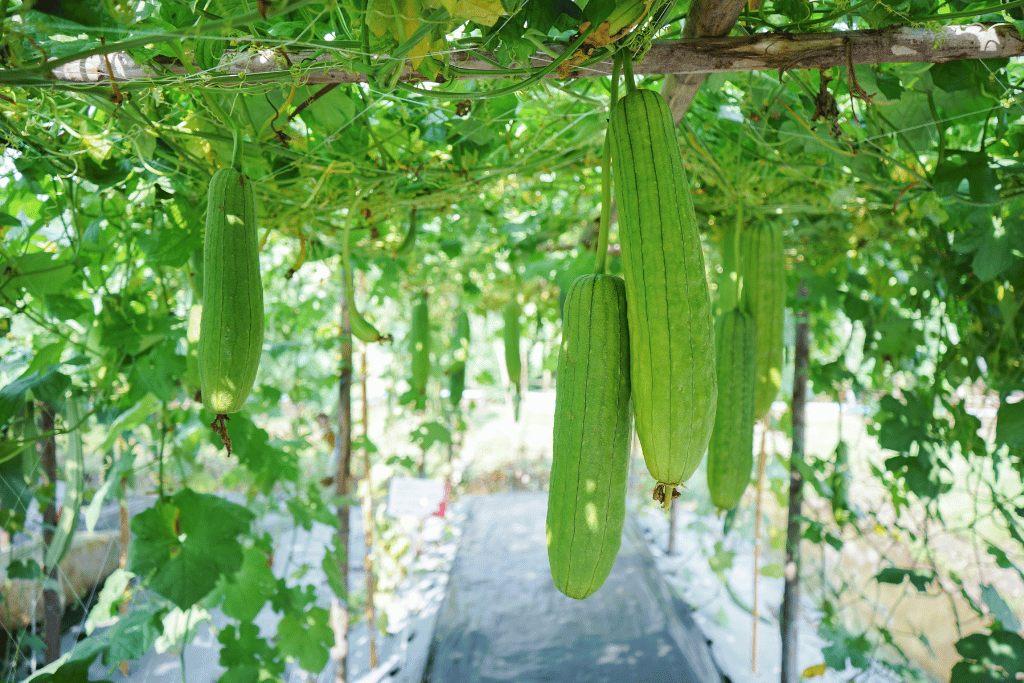
There are dozens of vegetables (most of them are actually fruits) that grow on vines. They like to spread about and creep along the ground, swirling and twirling their trailing vines every which way in search of open space and access to sunlight.
It can turn out to be a tangled mess if not cared for properly. Growing vines vertically is a simple solution. It’s a great way to maximize space in the garden bed and save the extra surface room for other crops. Trellised plants protect produce, increase yields and can be positioned to shade plants that need relief from the sun.
Here we’re going to list some of the most popular, unique and delicious vegetables (and fruits) that grow on vines. So break out your trellises, fencing, lattice, stakes and twine, because in this article we’re moving on up!
The Benefits of Vine Growing Vegetables
Some gardeners may view vines as a nuisance. They can spread aggressively, smother all your garden space and even strangle other unsuspecting crops.
Now, these characteristics might not be an issue if you have tons of space to let the vines roam wild and free.
But if room in your garden is limited? It can lead to lots of issues.
Let’s have a quick look at how, with a few tweaks, we can use the characteristics of vine growing vegetables to our advantage.
- Much higher yields are produced in far less space when vines are trained to grow vertically.
- Pest and disease pressure is significantly minimized as vines, foliage and stems grow upwards, experiencing excellent air circulation and receiving direct sunlight in areas that otherwise wouldn’t get exposure.
- Produce that is lifted off the ground stays cleaner and is at a lower risk of rotting and being hidden and overlooked.
- Fruits and vegetables will be much easier to harvest. They are more visible and grow at a convenient height which means less bending over; your back will thank you!
Now that we’re aware of the advantages of growing vine vegetables and fruits vertically we can list off some common (and not so common) types that grow prolifically in this manner.
Pole Beans
A staple summer crop, green beans are easy to grow and produce abundantly. To maximize both these aspects, they should be given some support. They love to climb and their grasping vines will effortlessly pull them upwards.
Pole beans have a wider harvest window than bush beans, meaning you can enjoy the fresh green pods all season. There are many varieties to choose from, making them fun to grow and experiment with; search seed companies and catalogs to find your favorite size, color and flavor of bean.
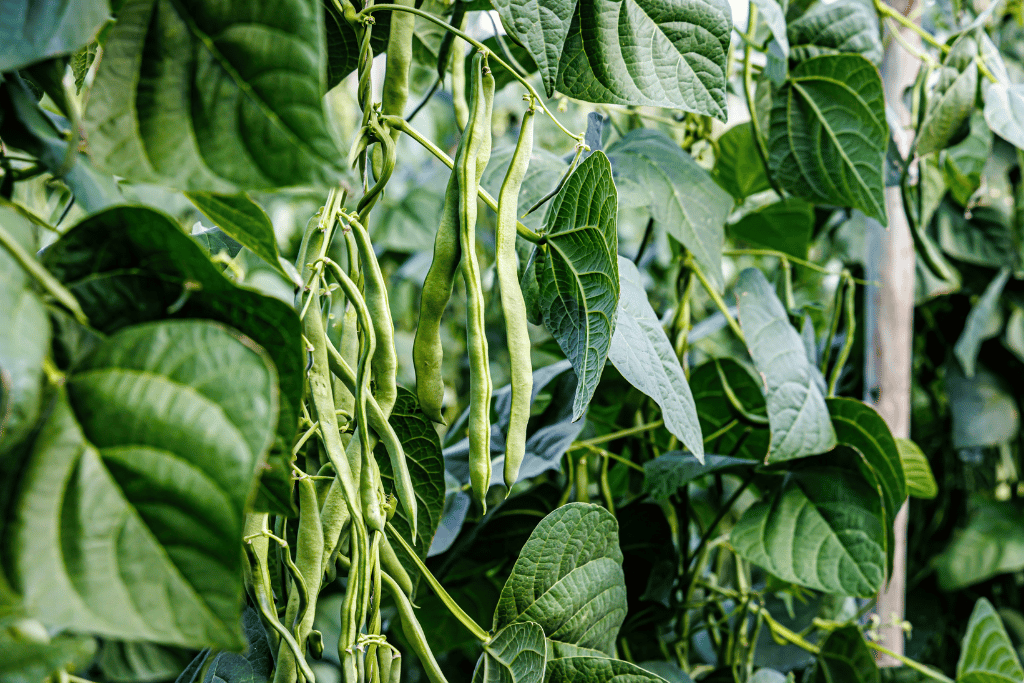
Peas
One of the best cool-weatherher crops is peas. Plant them early in the spring or late in summer to reap multiple harvests in a single season. The stalks will proliferate quickly and the stems climb without much help, provided they have something to latch on to, thanks to their tightly wound tendrils.
Little white blooms quickly appear and then fade with the full-size pods not far behind. Pick them continuously for heavier yields. Eat them up shortly after harvest to enjoy them at their freshest. Like beans there are loads of varieties to choose from.
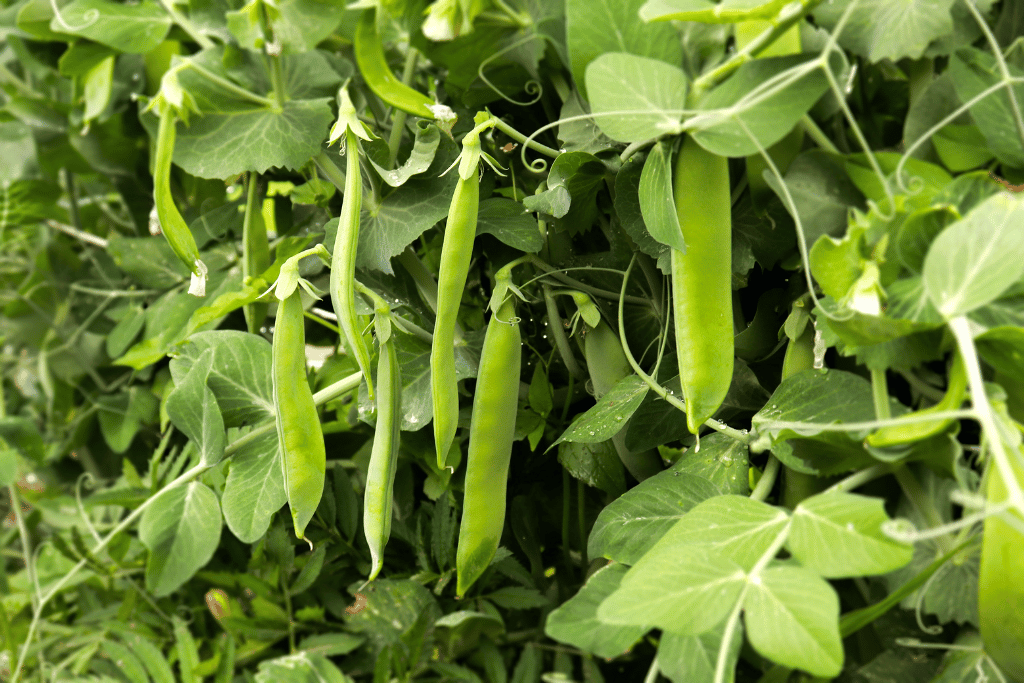
Indeterminate Tomatoes
Tomato plants are essentially one big vine. Therefore, it’s always a good idea to give them support, especially the indeterminate tomato varieties. They will grow continually with reckless abandon until killed off by a frost.
Tomatoes are vulnerable to blight and other diseases and pests; the best way to combat this is by giving them plenty of sturdy support. Cages, fencing or a solid trellis will do the trick. Because tomato vines are thicker and less malleable than pea and bean vines, they will need a little more assistance getting established on their trellis. Handle vines with care especially when heavy fruits or bunches start to weigh them down. Cherry and plum varieties especially thrive when grown vertically.
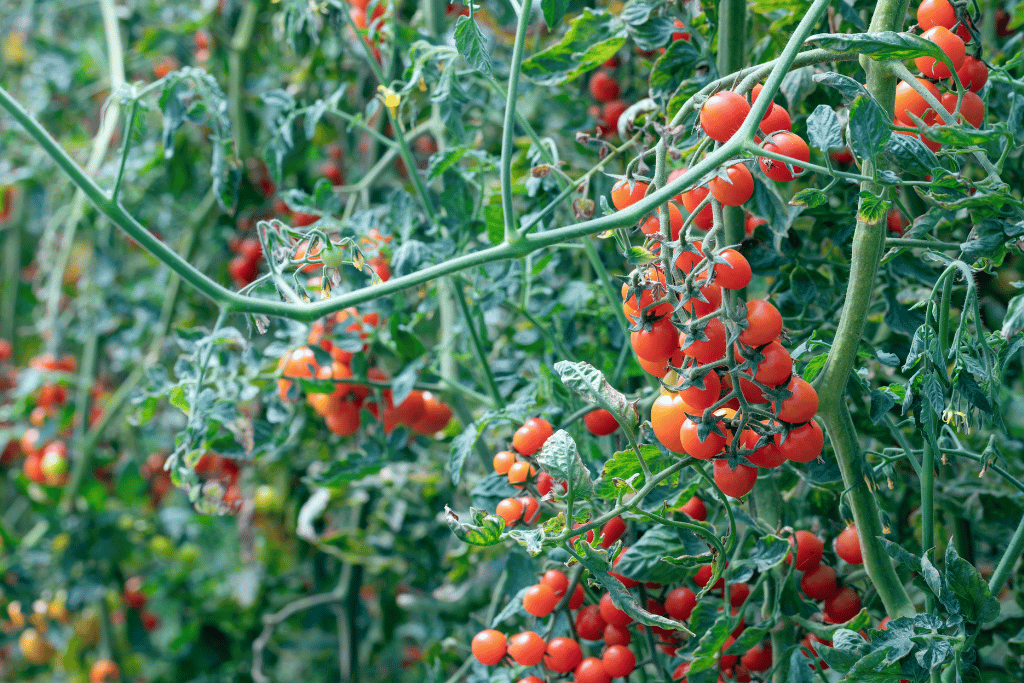
Cucumbers
Summer wouldn’t be complete without fresh cukes! So help them extend their season by getting them up off the ground. If left lying on the garden surface, cucumbers are likely to go hiding, only to be found once they’ve swollen up to an inedible size. On the ground they’ll also be prone to moisture related diseases and pest attacks.
Select vining specific varieties, provide a support and leave them to their own device. Their vines and tendrils will enthusiastically grab hold and take off growing upwards. Smaller pickling varieties are perfect for trellising and will produce bushels of cool cukes over the course of the season.
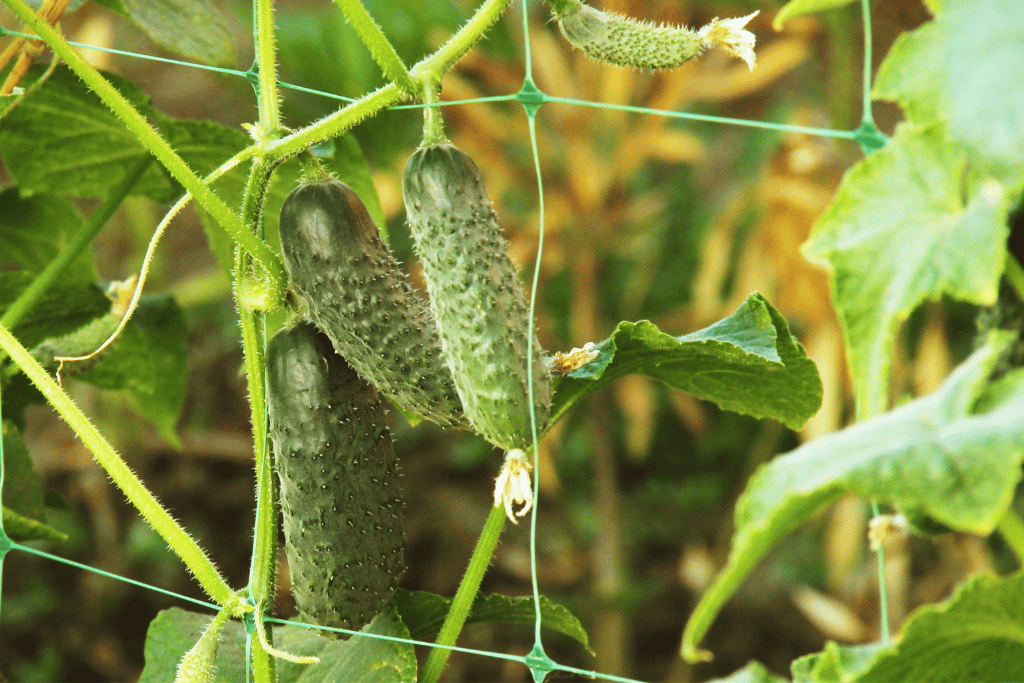
Hops
The fascinating, fast-growing vines produce clusters of conical flowers that are filled with resinous oils, emitting intriguing aromas. Commonly cultivated for beer making, hop plants are a fun plant to grow and admire.
Hops willingly grow upwards and spread across any type of support system. If you’re up for trying something different, give hops a shot. The aromatic flowers won’t disappoint. The young leaves of the hop plant can be steamed and eaten as a vegetable, or try steeping the flowers to make a night-time sleep-inducing tea.
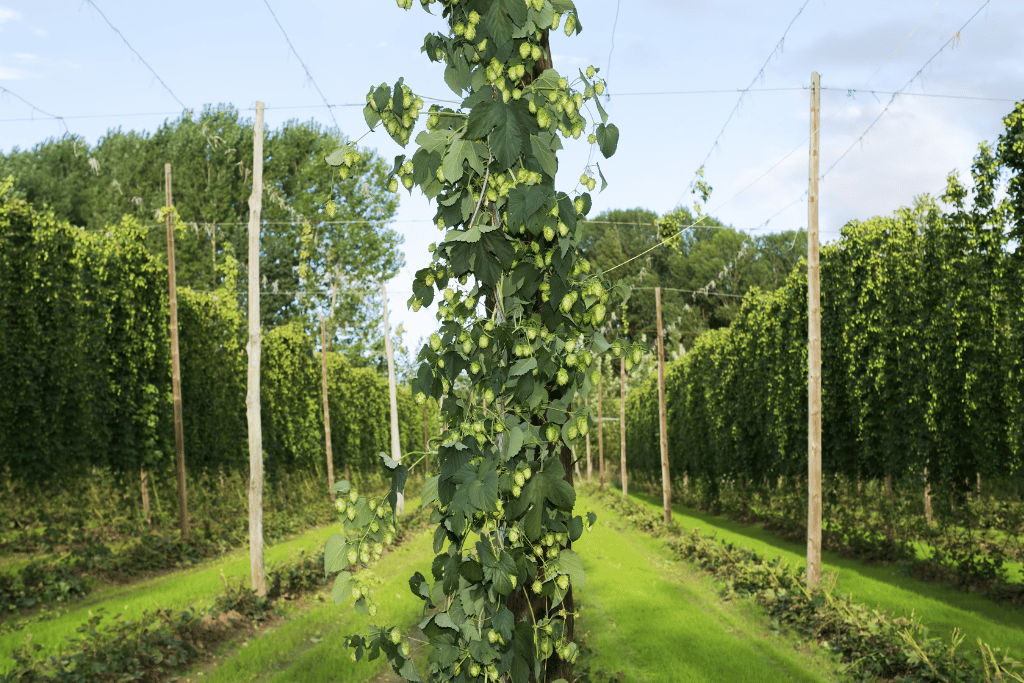
Nasturtium
Nasturtium doesn’t qualify as a vegetable, or fruit for that matter, but the leaves and flowers are edible and quite delicious! It also produces lively vines that crawl, creep and can easily be trained to climb. They grow incredibly quickly, adding interest and inviting pollinators to your garden. Pinch off flowers and leaves and toss them into a salad to add a peppery punch!
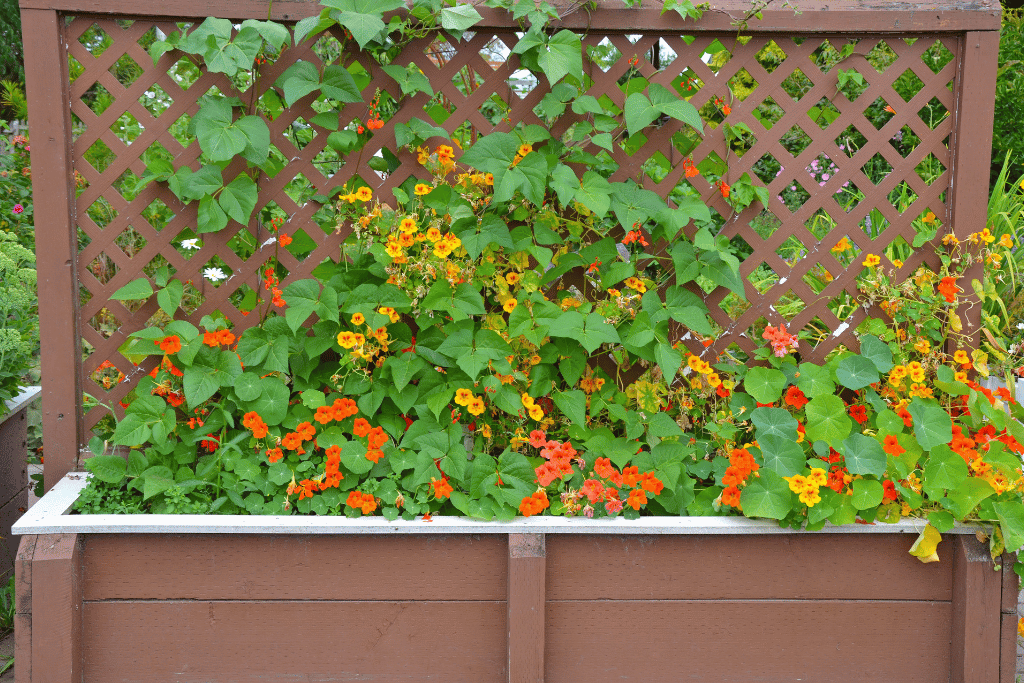
Squash
Many varieties of winter squash produce long, running vines that can cause trouble for neighboring garden crops. Give them a trellis in their early growing stages to get them climbing upwards.
Larger varieties will need seem extra support as they bulk up, try using socks or panyhose tied to the trellis to give them extra support. Summer squash can also be trellised, they will just need a bit more attention and training.
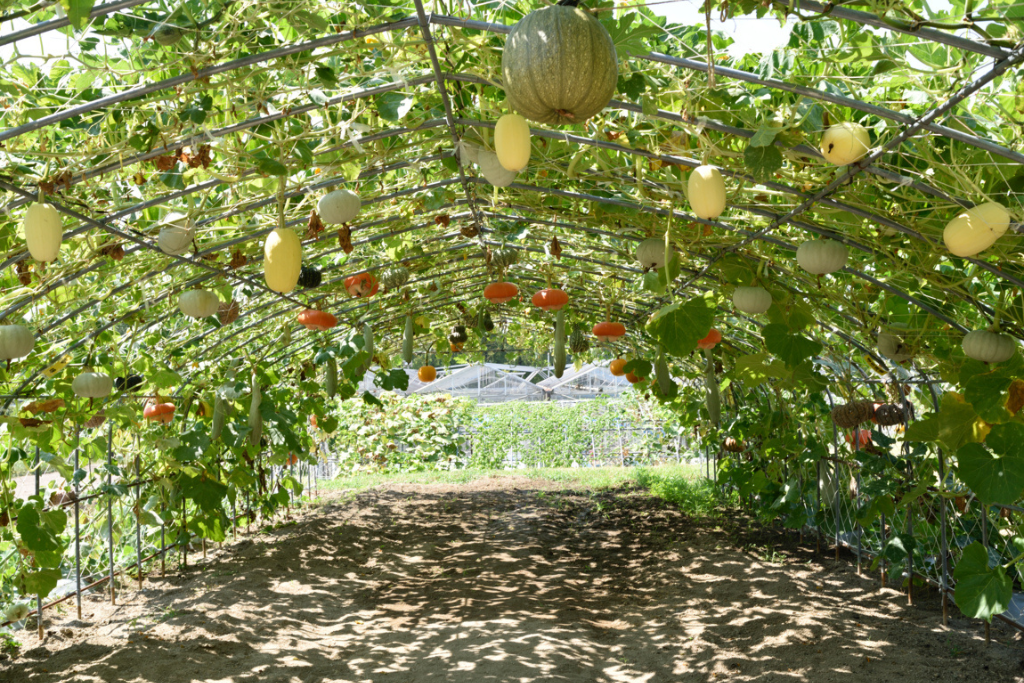
Pumpkins
Associated with everything fall, pumpkins have a long growing season that sees their vines spreading and sprawling all over the place. That’s all well and good if you have unlimited space in your garden, most of us do not however.
To save some space, try trellising your pumpkin patch. It may sound intimidating at first, but with a strong support system pumpkins can be grown vertically. Once you give it a shot, you may find that pumpkins appear to be natural climbers.
Who would have thought?
Their tendrils will grab hold to their supports, gladly growing up. Just give extra support where it’s needed. For your first go round of you could always try a smaller variety and work your way up.
Even with their overbearing growing style, pumpkins make a great companion plant.
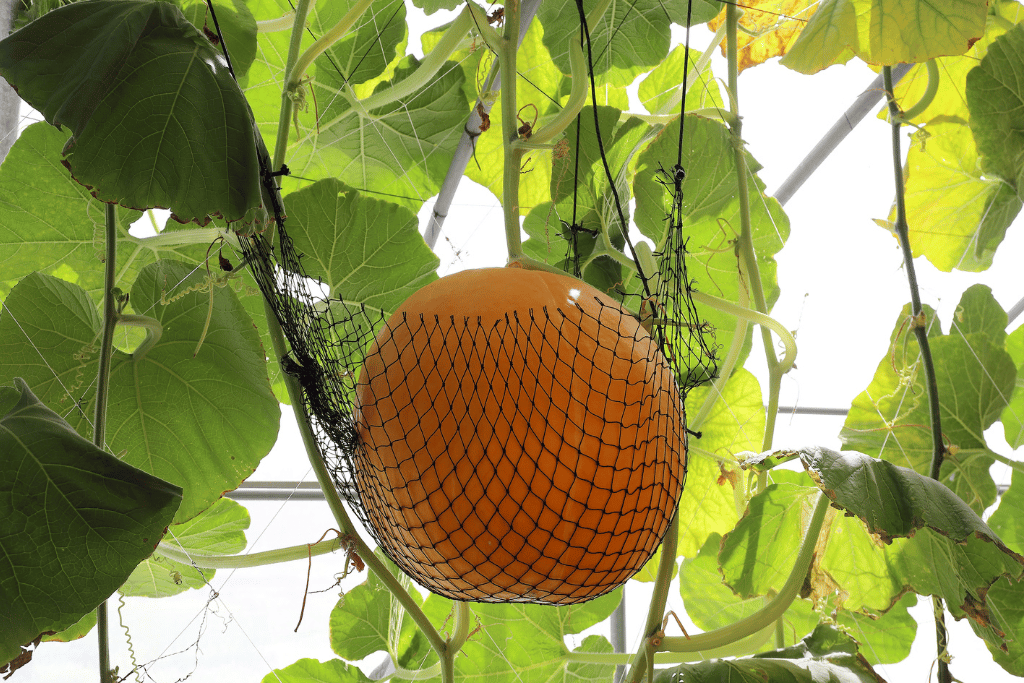
Sweet Potatoes
The vines of sweet potatoes can grow over 20 feet long and cause a real tangly mess, intruding into other areas of the garden. To resolve this issue plant your sweet potato slips at the base of a trellis and carefully guide the vines upward as they grow longer. This will prevent them from creeping along the garden surface, setting roots and hoarding all the sunlight, water and nutrients. Established vines spreading over a trellis look beautiful and will save a bunch of space.
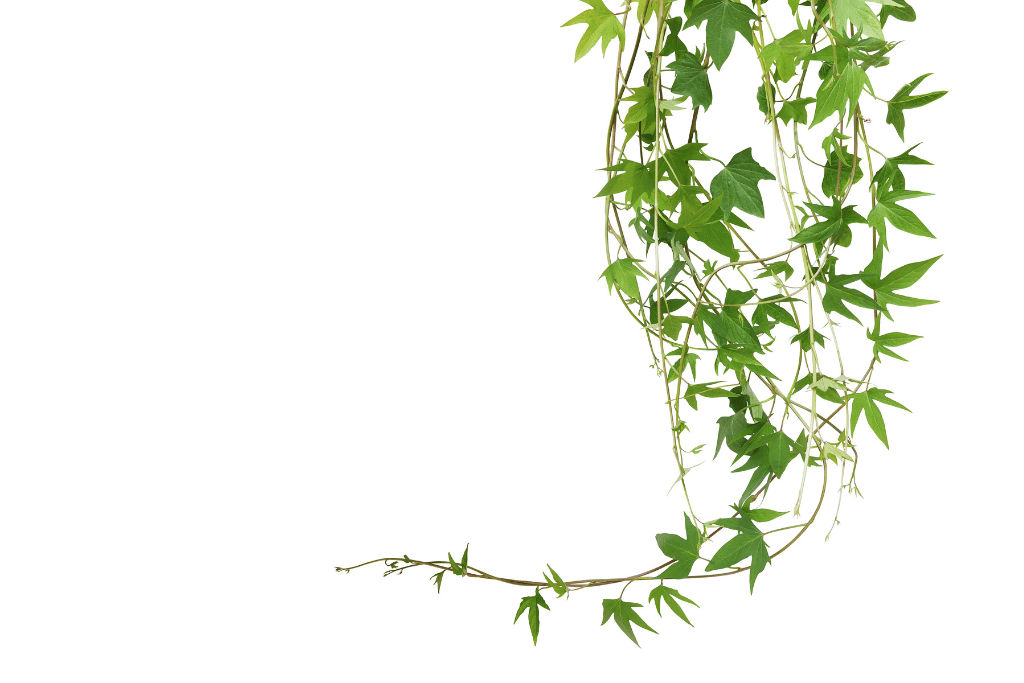
Chayote
This strange looking fruit is a type of gourd native to Mexico. The green, pear-shaped gourds grow on long, tenacious vines. Chayote thrives in subtropical to relatively cool climates, but prefers not to be exposed to cold temperatures and frost. The vines grow vigorously and one plant alone can easily produce over 50 fruits. Pick them when they’re young and tender for the best flavor and texture.
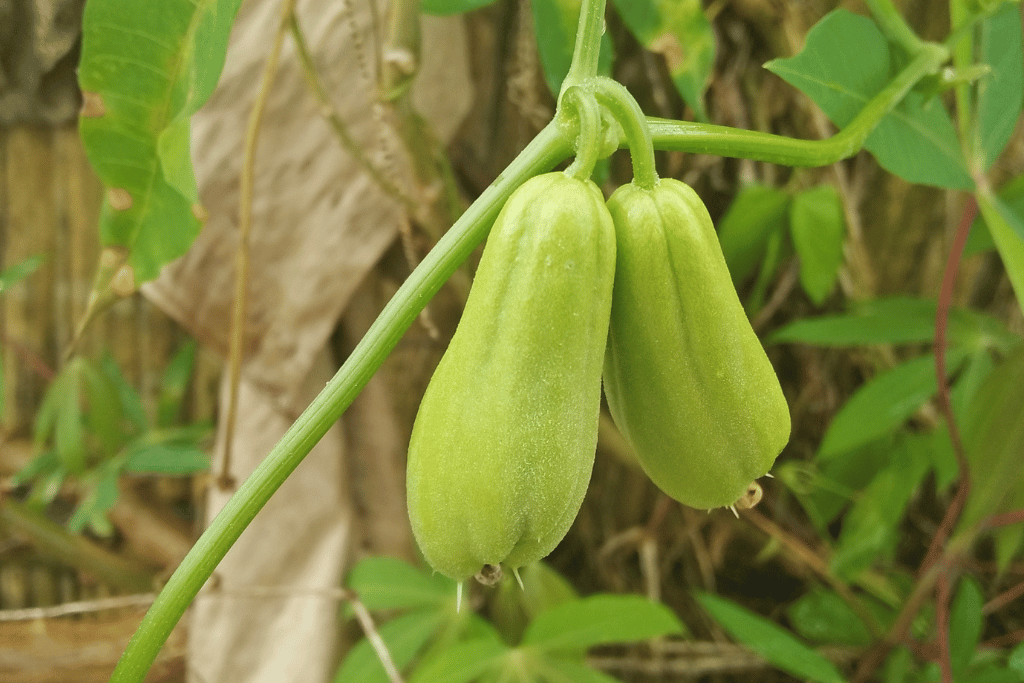
Rocoto Peppers
This particular type of pepper, native to Central and South America, produces multiple stems that can easily be trained to grow upwards. While not technically a vine, rocoto peppers are unlike other pepper varieties in that they produce lots of stems that contain loads of smallish fruits, making them a great candidate for staking and trellising. Just watch out, because they’ve got a kick, coming in at 100,000 scoville units.
Did you know peppers grow great in raised bed?
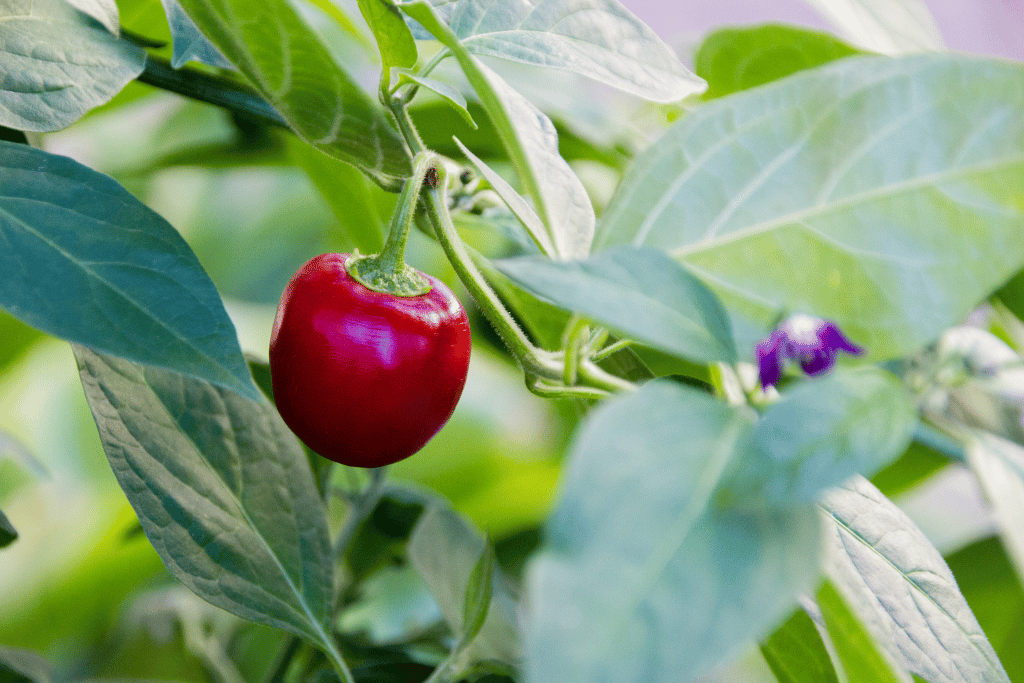
Loofah
Have you ever wondered where the concept of the sponge came from?
No?
Well that’s okay. It’s still mighty interesting to find out that loofah gourds have been traditionally used as a scouring tool for a long time. And like most gourds and squashes this plant produces vigorous vines that do best growing on a trellis. Just give them some early support and they will quickly zoom upwards.
Keeping them off the ground will save space and protect the fruits from pests, rot and disease. The young fruits can be eaten as a nutritional side dish whereas the mature gourd is dried, cut up into pieces and used as a natural sponge.
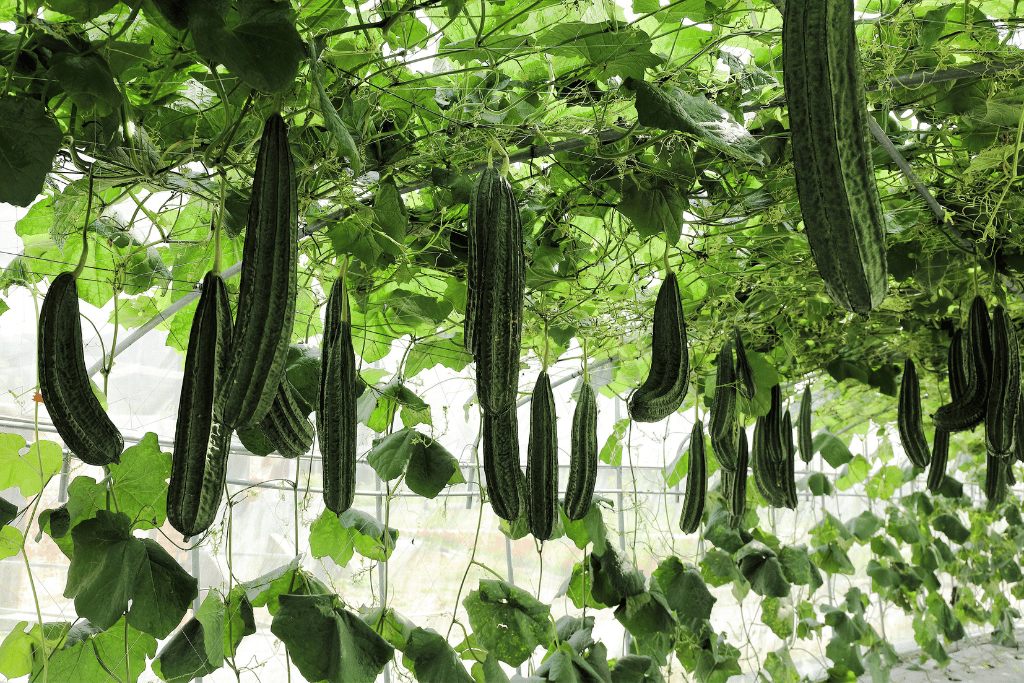
Passion Fruit
The tropical vines of passion fruit are perennials and will produce the sweet South American native fruits year after year. If you live in zones 9-11 you can get away with cultivating this passion inducing plant. It’s risky otherwise, as they are extremely intolerant of the cold. Consider building a permanent structure for them to climb on continuously over the course of multiple seasons.
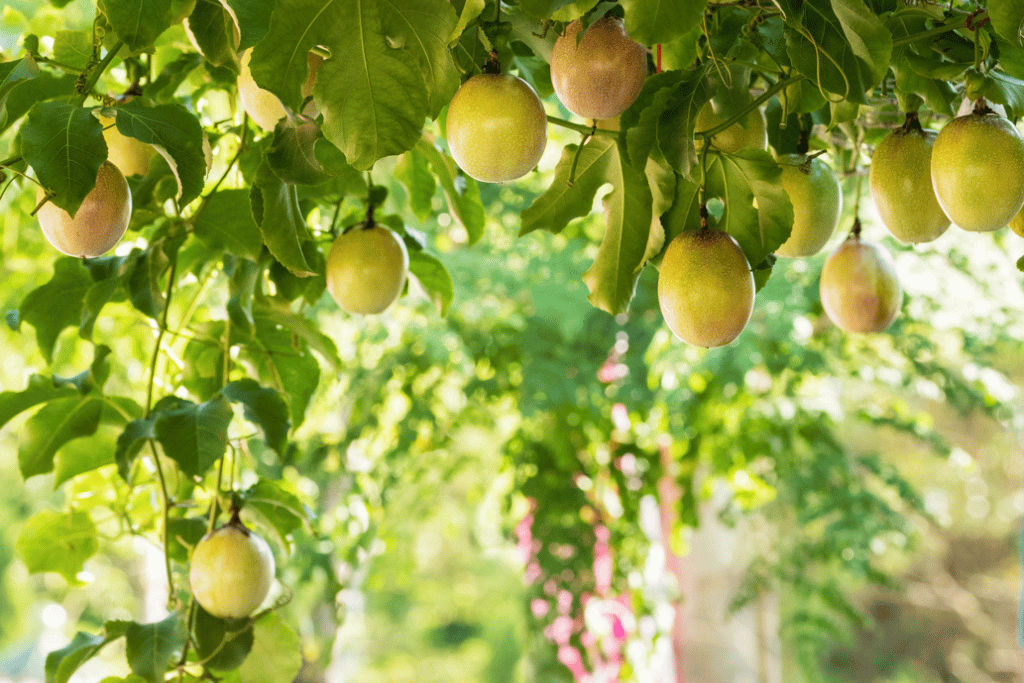
Malabar Spinach
Another obscure vine vegetable variety is malabar spinach. It naturally grabs hold of anything its vines touch and will grow on a trellis without any assistance.
The advantages of this vegetable are numerous. Malabar spinach is extraordinarily nutritious; the greens provide good amounts of vitamins A and C, as well as iron, phosphorus, magnesium potassium and antioxidants, making it a true nutritional powerhouse.
Unlike most green leafy vegetables that wilt or bolt when hot weather arrives, malabar spinach holds up to summer sun and steamy temperatures. Try growing this topical vine vegetable to make sure you get a steady dose of healthy greens straight through the summer.
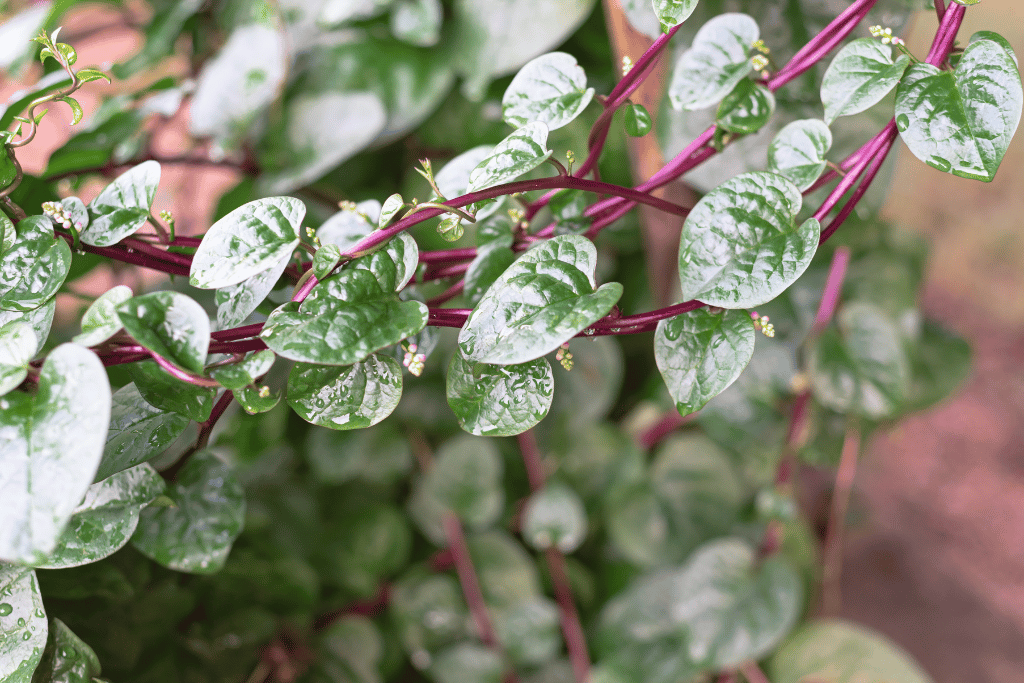
Melons
If you’ve ever grown melons, you know how aggressive their vines can be.
So why not save space by providing them with a support structure?
It sounds a bit audacious to trellis your melons but it is possible, especially if you choose smaller varieties. Make sure the support structure is strong and carefully thread the young vines upward.
When the fruit begins to develop and gain weight use some old, clean rags to fashion a hammock like support to keep it from drooping. Lifting fruit up off the ground will minimize the risk of pest attacks, rot and disease.
If you’ve ever wondered what to grow alongside your melons, read cantaloupe companion plants guide.
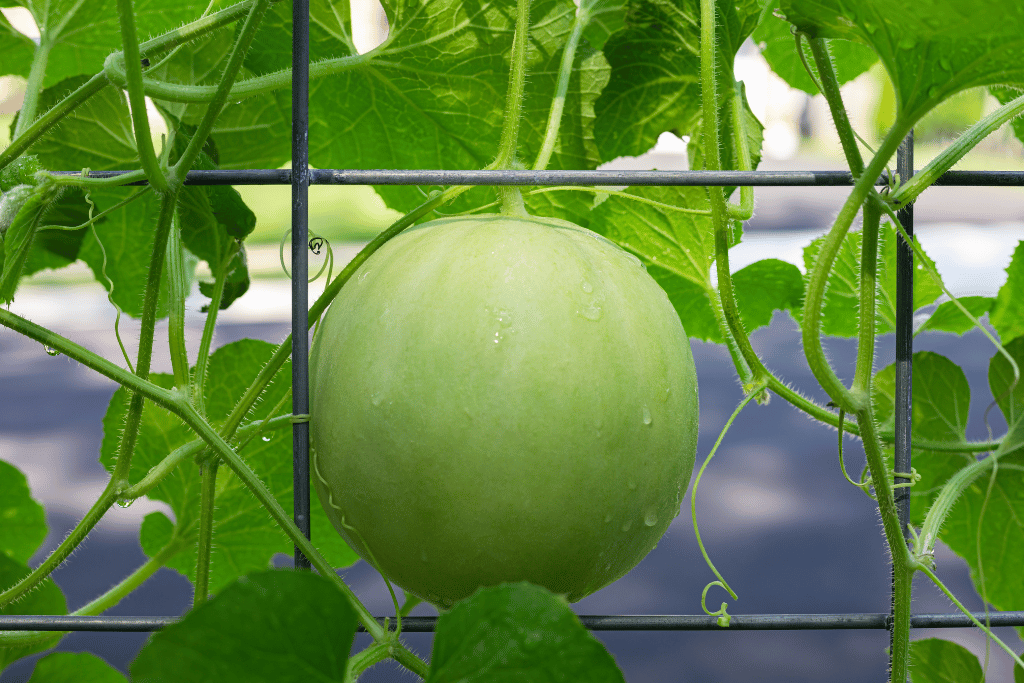
Strawberries
Admittedly, strawberries are not vines. But their above ground roots, or stolons, sure act vine-like. These running roots refuse to stay put and will travel all throughout the garden, depositing daughter plants. This is a lovely feature for propagating new strawberry plants, but not for keeping them contained. Give strawberries a trellis to climb up to keep them off the ground and away from pesky pests.
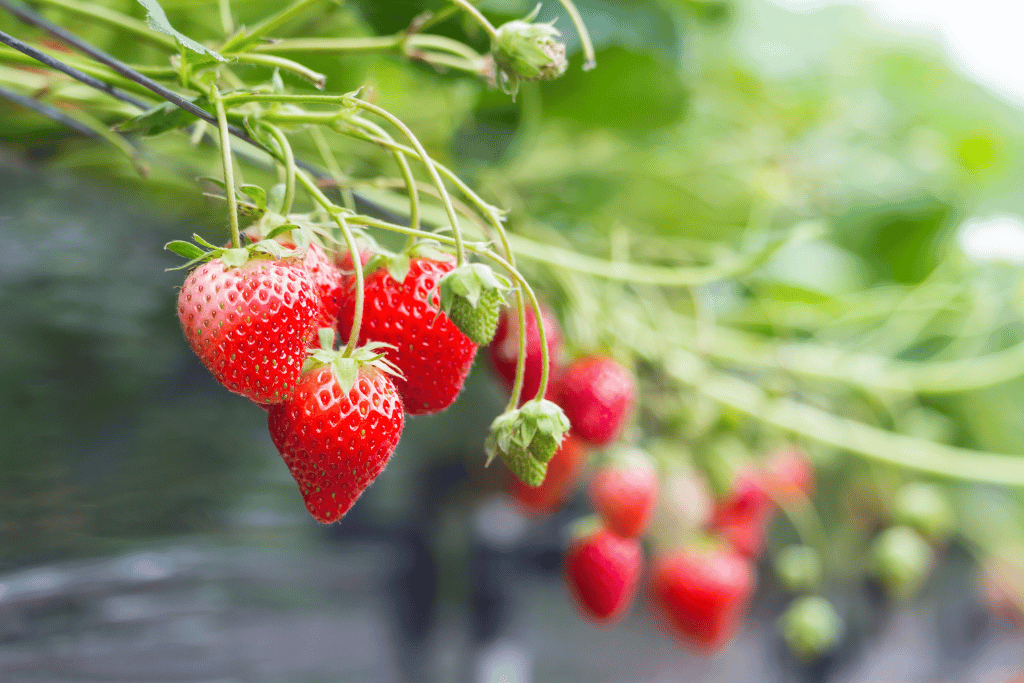
Up, up and Away!
The list of vine growing fruits and veggies provided here is long and varied, but far from exhaustive. Although there are many other vining species and cultivars to explore within the plant kingdom this list should be a good jumping off point!
It’s a pleasure to watch vining plants thrive and grow. Use your ingenuity and design skills to creatively come up with support structures that beautify your garden and maximize its space. So avoid the tangled, smothering mess of ground bound vines and grow up!

Frequently Asked Questions (FAQ)
What vining plant grows the fastest?
The trailing vines and bright orange flowers of nasturtium grow at an astounding rate. If given a support structure early on, they will start climbing within a month of being planted. Nasturtium can grow six feet+ in a season and will be loaded with brilliant edible flowers.
What is the easiest vine crop to grow?
Peas, beans and cucumbers are all dead simple to cultivate. Directly sow seeds into the garden and accompany the planting site with a trellis or some fencing. As plants begin to sprout, gradually train them to climb the structure and they’ll happily climb upward and spread out. Maintenance for all of these crops is minimal.
What is the hardiest vine?
They’re not an edible crop but many types of ivy are extremely cold hardy and stay green throughout the winter.



